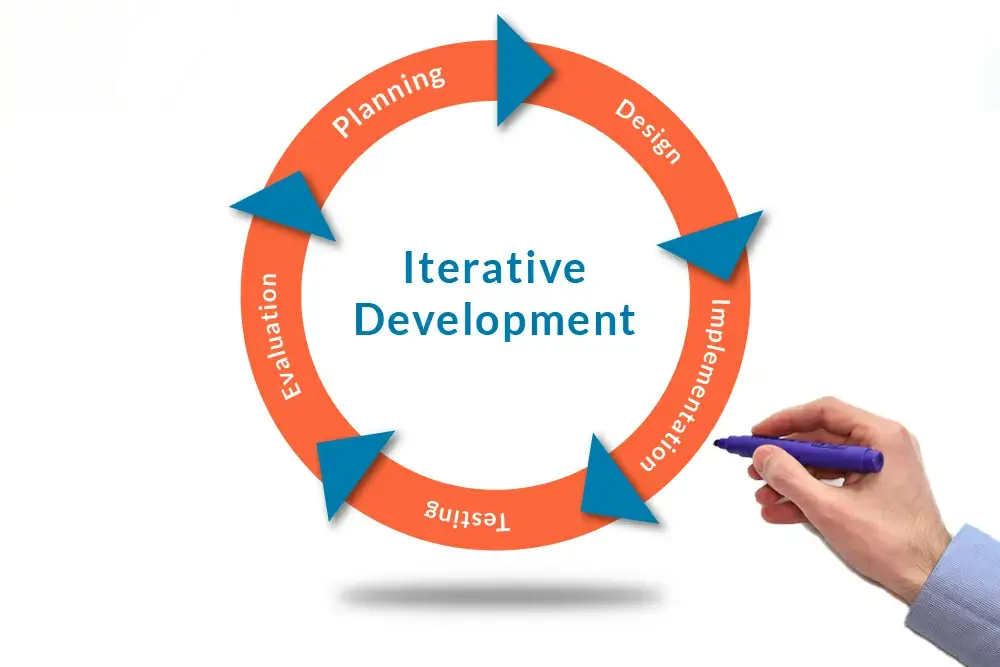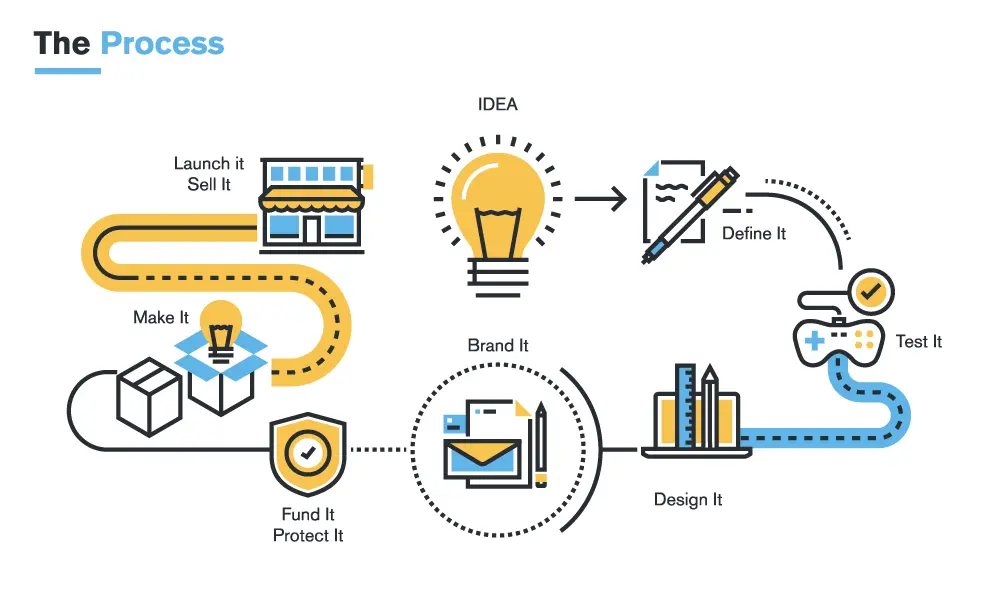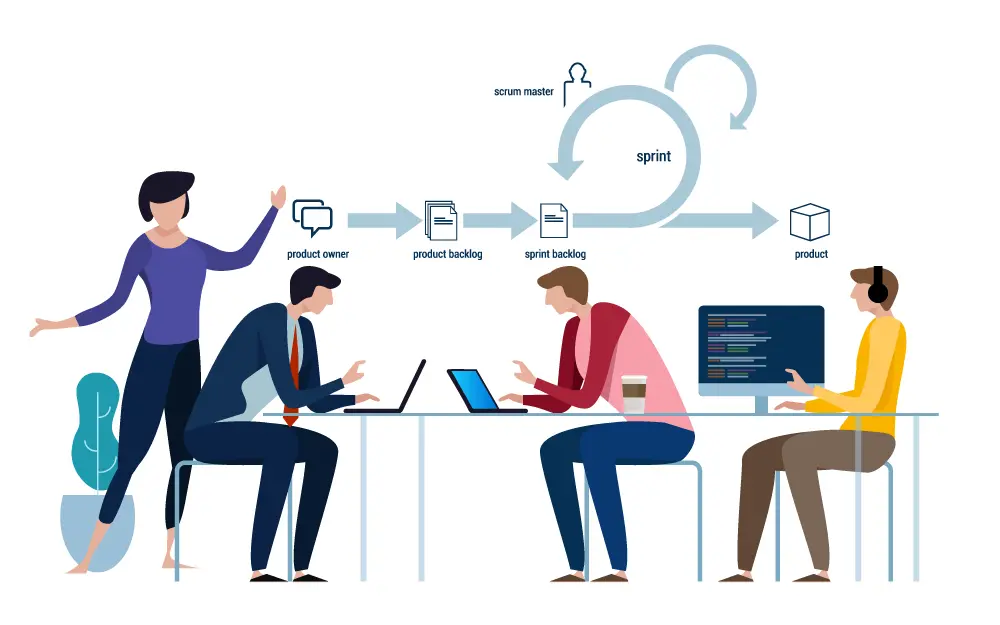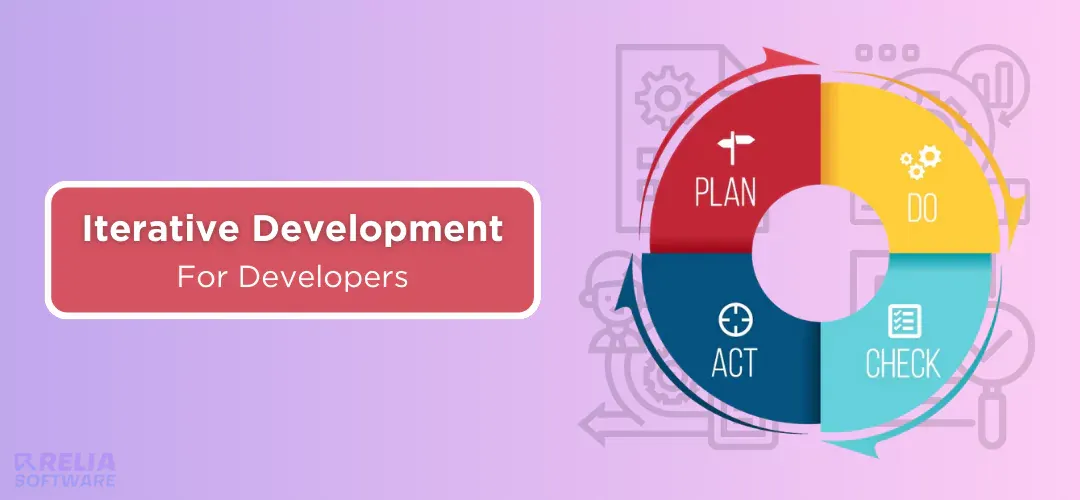Creating a new product from scratch can be dangerous, particularly for startups and entrepreneurs. When you have a limited budget and resources, you cannot afford to squander time or energy on goods that will ultimately fail. However, iterative development can optimize every stage of the product development process, giving you confidence in the product's quality.
This article will show you an in-depth explanation of iterative development with its definition, benefits, development process, best practices, and challenges.
What Is Iterative Development?
Iterative development is a software development lifecycle (SDLC) that focuses on continual improvement throughout repeated cycles. Each iteration focuses on creating, testing, and fine-tuning a limited set of features based on user feedback and project objectives. This enables early issue detection, faster course correction, and, ultimately, a product that better fulfills user needs.
Software development has traditionally taken a linear approach. Every feature was meticulously planned, created, and thoroughly tested before its release. However, software development is a dynamic process, and customer requirements can change quickly. Iterative development provides a more flexible and effective solution.

Benefits of Iterative Development
Traditional development methodologies frequently required waiting until the very end to determine whether a product genuinely satisfied user needs. If serious problems are detected late in the process, it may result in a loss of time and resources. Iterative development provides several main benefits that can considerably improve the development process:
-
Faster Feedback Loops: Create, test, and refine features in small increments. This allows you to identify problems early and keep the project on track for user needs.
-
Reduced Project Failure Risk: Validate features during development. If something isn't working, you can adjust your strategy fast and prevent wasting resources.
-
Improved User Experience (UX): Collect customer feedback and use it to improve the product for a more seamless and engaging experience. This leads to more satisfied users and a successful launch.
-
Increased Agility: Adapt to changing needs and technology with ease. Smaller development chunks enable faster course modifications to remain competitive.
-
Improved Communication: Regular feedback loops promote open communication among developers, designers, and stakeholders, keeping everyone on track. This teamwork results in a more efficient development process.
Challenges of Iterative Development
Even the most powerful approach comes with its own set of hurdles. Here's a look at some common challenges associated with iterative development:
Scope Creep
Iterative development benefits from flexibility, however, this can occasionally lead to "scope creep." This happens when new features or functionalities are added outside of the initial project scope, potentially leading to delays and exceeding budget constraints.
Managing Stakeholder Expectations
The ever-changing nature of iterative development might make it challenging for stakeholders to understand the end product vision. Clear and consistent communication is critical for managing stakeholder expectations and ensuring everyone understands the iterative process and its potential for change depending on user feedback.
Lack of Resources
Implementing iterative development can demand more resources than a more linear method. This could entail investing in performance testing tools, project management software, or hiring more workers for continuous integration and testing.
Maintaining Project Focus
With an emphasis on continual improvement and user feedback, it's easy to lose sight of the project's primary goals. Prioritization and explicit goal setting for each iteration are critical for maintaining focus and ensuring the development team is working towards the overall project vision.
Measuring Progress
Traditional project management metrics may not always transition well to iterative methodologies. Creating new methods for monitoring progress and value delivered in each iteration is critical for demonstrating success and sustaining team morale.
By recognizing these possible obstacles and employing mitigation methods, you may ensure a smoother and more effective iterative development process.

The Iterative Development Process
Stage 1: Planning and Requirements Gathering
Any successful project is built on a sound plan. During this first stage, the development team collects requirements, establishes project objectives, and prioritizes features. The team will determine what needs to be built (requirements) and why (project goals) by doing user research, competitor analysis, and brainstorming. Therefore, it makes everyone understand the project roadmap clearly.
Stage 2: Development and Iteration
This is where the building takes place! The team works in short cycles (iterations) to create and test a small number of features at a time. They code, design, and run unit tests. The idea here is to regularly monitor and gather feedback to discover defects early and ensure that the project is on track.
Stage 3: Testing and Feedback
Once the features have been constructed, it is time to test them! Various testing methods are utilized, including unit testing, integration testing, and, most crucially, gathering user input. Surveys, usability testing, and user interviews assist the team in understanding the user experience and identifying areas for improvement.
Stage 4: Deployment and Release
With a well-tested and refined set of features, it's time to provide the most recent iteration to users. This could include releasing a new version of the software or providing updates to an existing product. Monitoring performance and user feedback throughout the deployment stage helps to discover post-release issues and plan for future updates.
>> Read more: Exploring 6 Deployment Strategies for Smooth Software Updates

>> Read more: Top 9 Best DevOps Deployment Tools for Businesses
When To Use Iterative Development?
While iterative development offers numerous advantages, it's not a one-size-fits-all solution. Iterative development isn't always the answer, but it shines in certain situations:
-
Unclear project goals: Iterative development is suitable if your project's goals are still unclear. Building and testing features in segments allow for flexibility in response to new information and user input. This is ideal for new initiatives or unknown areas.
-
User experience (UX) matters most: Iterative development is all about user feedback, thus it's ideal for UX-focused projects. As you construct, you are continually gathering user feedback to ensure that the final product is user-friendly and addresses real-world problems.
-
Need fast iterations and feedback: Iterative development is an excellent alternative if you need to get something out there rapidly and gather customer input right away. Shorter cycles provide faster refining and response to market changes.
-
Limited resources: By concentrating on small, attainable goals in each iteration, you can make the most of what you have and continue to progress even with a smaller team or budget.
>> Read more: Product Metrics in Software Engineering: Types, Techniques, Tools
Comparisons Between Iterative And Other Development Types
Iterative vs. Waterfall Development
Think of a straight line with clear steps vs. a winding staircase that lets you adjust your path. That's the core difference between Iterative and Waterfall development.
|
Feature |
Waterfall Development |
Iterative Development |
|
Approach |
Straightforward steps, one after another. |
Repeating cycles with room for changes. |
|
Requirements |
Set from the start and rarely change |
Evolve and adapt based on user feedback |
|
User Feedback |
Not much until the later stages |
Gathered throughout the entire process |
|
Flexibility |
Not very flexible, changes are hard |
Highly flexible, can adapt to new needs |
|
Best for projects with |
Clear and well-defined requirements |
Unclear requirements or a need for user feedback |
When to choose Iterative over Waterfall?
-
What you're building is still taking shape.
-
Getting user feedback early and often is important.
-
Resources are limited or the market is constantly changing.
Iterative vs. Agile Development
Iterative and Agile development are flexible and user-focused, but there are slight differences in structure and what they prioritize.
|
Feature |
Waterfall Development |
Iterative Development |
|
Process |
Specific frameworks (like Scrum) with short sprints |
Flexible structure with customizable cycles |
|
Focus |
Delivering working software in short bursts |
Continuously improving features |
|
Planning |
Short-term, focused on sprint goals |
Adapts based on what's learned in each cycle |
|
Best for projects with |
Complex projects with ongoing input from stakeholders |
Diverse projects needing flexibility and user feedback |
When to choose Iterative over Agile?
-
A structured framework like Scrum feels too rigid.
-
The focus is constantly improving a single product, not quickly delivering multiple features.
-
The development team prefers a more flexible approach without a strict framework.
>> Read more: In-depth Explanation Of Iterative and Incremental Development
Best Practices for Implementing Iterative Development
Clear Goals for Each Step
Every stage in your iterative development journey should have well-defined objectives. These objectives should be specific, measurable, achievable, relevant, and time-bound (SMART goals). This keeps everyone focused on producing outcomes within each cycle, allowing you to track progress and make adjustments as needed.
Stay Connected with Stakeholders
Open and constant communication with stakeholders is required throughout the iterative development process. This includes updating stakeholders on project progress, user input, and any impediments. Everyone can be on the same page and prepared to provide feedback as needed.
Pick the Right Tools
The right tools can make a big difference in iterative development. Here are some helpful ones:
-
Version control systems: Track code changes, collaborate easily, and revert to previous versions if needed.
-
Project management tools: Use software like Kanban boards to see tasks, track progress within each cycle, and identify roadblocks.
-
User feedback tools: Gather valuable user insights through surveys, usability testing, and user interview tools. This helps guide future iterations.
By using the right tools, development teams can work smoother, collaborate better, and ultimately deliver a better product.
Keep Learning and Adapting
Iterative development's primary strength is its ability to adapt and improve in response to learning. This includes regularly soliciting customer feedback, analyzing project data, and identifying areas for improvement. The development team should be willing to change their methodology and apply new knowledge in subsequent versions. This keeps the project on schedule to provide a product that people genuinely love.

>> Read more: Custom Web App Development
Conclusion
In conclusion, iterative software development is powerful and flexible. Prioritizing customer feedback and continual improvement lets you design products that fulfill user needs. However, iterative development has its drawbacks. Understanding these problems and following the best practices above can help you overcome barriers and maximize iterative development.
>>> Follow and Contact Relia Software for more information!
- development

